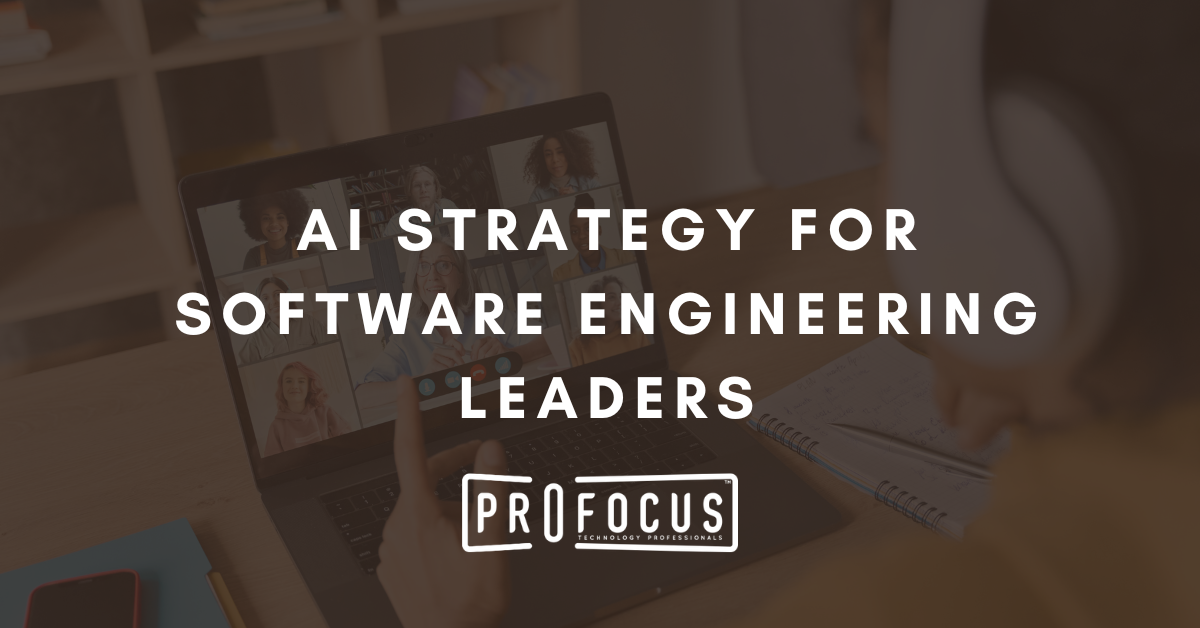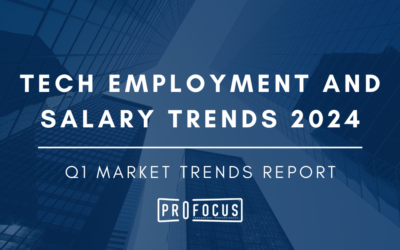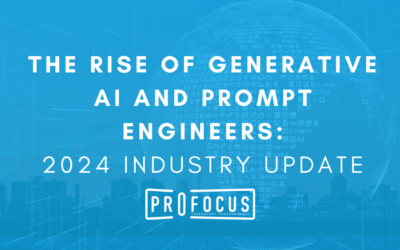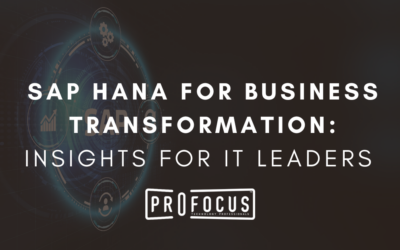In the rapidly evolving landscape of artificial intelligence (AI), software engineering leaders are at the forefront of integrating innovative AI strategies and visions into their organizations. Our recent Software Engineering Leaders Roundtable, a virtual event hosted by ProFocus Technology, provided an insightful forum for discussing the challenges, tools, practical applications, and ethical considerations of AI in the tech industry. The leaders offered valuable perspectives on aligning AI capabilities with business strategies, navigating the complexities of AI adoption, and preparing the workforce for the AI era. Whether you’re a tech professional seeking to enhance your AI knowledge or a business leader exploring AI’s transformative potential, the following recap provides insights on the latest trends and advice from industry experts.
What Are the Key Strategies and Visions for Leveraging AI in Organizations?
Key Insight: Organizations are aiming to align AI’s potential with their strategic goals, although challenges exist, particularly in bridging the understanding gap between technical and non-technical stakeholders.
Participants kicked off the event by sharing their organizations’ visions for leveraging AI, revealing a broad spectrum of understanding and application. A common thread was the challenge of aligning AI’s potential with non-technical stakeholders’ expectations, underscoring a gap in understanding its practical capabilities versus its hyped possibilities. From the misuse of AI terminology to the strategic implications of AI on business models, the conversation underscored the importance of demystifying AI and focusing on data quality, practical applications, and the ethical considerations of AI deployment.
Which Tools and Practical Uses of AI Are Most Effective?
Key Insight: Tools such as Code Pilot, Code Rabbit, Otter, and Midjourney are instrumental in automating mundane tasks and enhancing productivity, demonstrating AI’s role as a supportive tool rather than an end goal.
The discussion brought to light various tools that enhance software development and operational efficiency, such as Code Pilot, Code Rabbit, Otter, and Midjourney. These tools exemplify AI’s role in automating mundane tasks, generating content, and facilitating more efficient code development. However, the leaders emphasized AI’s role as a tool rather than an end goal, advocating for its use in augmenting human creativity and productivity within a framework of ethical governance and practical utility.
How Do Organizations Approach AI Adoption and Ethical Considerations?
Key Insight: The approach to AI adoption varies significantly between larger companies, which face stricter governance, and smaller firms, which are more open to using AI to improve productivity and innovation, all while emphasizing the importance of ethical considerations and data governance.
An onsite roundtable underscored the divergence in AI adoption between larger companies and smaller, more agile firms. Larger organizations often face stricter governance and limitations, while smaller entities tend to embrace AI for its potential to enhance productivity and innovation. This session also highlighted the importance of ethical considerations, data governance, and the skills gap in effectively leveraging AI technology.
What Strategic Overview and Skills Gap Analysis Are Critical for AI Integration?
Key Insight: Leaders acknowledge the transformative potential of AI but also recognize the need for a strategic approach and addressing skills gaps within the workforce to leverage AI effectively.
Leaders shared their perspectives on AI’s transformative potential and the specific challenges their organizations face. The need for a strategic approach to AI, understanding its impact on specific business needs, and the importance of addressing skills gaps within the workforce were key themes. The discussion also touched on the practical aspects of AI in optimizing operations, enhancing customer communications, and driving innovation.
What Are the Strategies for Hiring and Developing Talent in AI-Related Roles?
Key Insight: Adaptability and continuous learning are prioritized in hiring for AI-related roles, with organizations implementing initiatives to foster AI skill development among employees.
The roundtable touched on strategies for hiring AI-proficient talent, emphasizing adaptability and continuous learning as critical qualities. The conversation also covered the initiatives organizations have implemented to foster AI skill development among employees, highlighting the importance of understanding AI’s role within the broader business context and ensuring strong governance practices.
How Can Workforces Be Prepared for the AI Era According to Industry Leaders?
Key Insight: Preparing the workforce for the AI era involves setting realistic expectations, leveraging AI judiciously, ensuring strong governance, and adopting a patient, proactive approach to workforce development and risk management.
Participants shared valuable advice for leaders looking to prepare their workforce for the AI era. Setting realistic expectations, leveraging AI judiciously, and maintaining strong governance emerged as essential strategies. The consensus underscored AI as a complementary tool, advocating for patience, investment in workforce development, and a proactive approach to managing the benefits and risks associated with AI technology.
Thanks to our engaged network of tech leaders for sharing their challenges, successes, and insights during our roundtable. Connecting tech leaders is crucial for the growth and success of our industry. If you’re an IT executive or manager looking to collaborate with peers, please reach out to James Lund at [email protected] to learn more about our upcoming events and our Tech Connect series.




